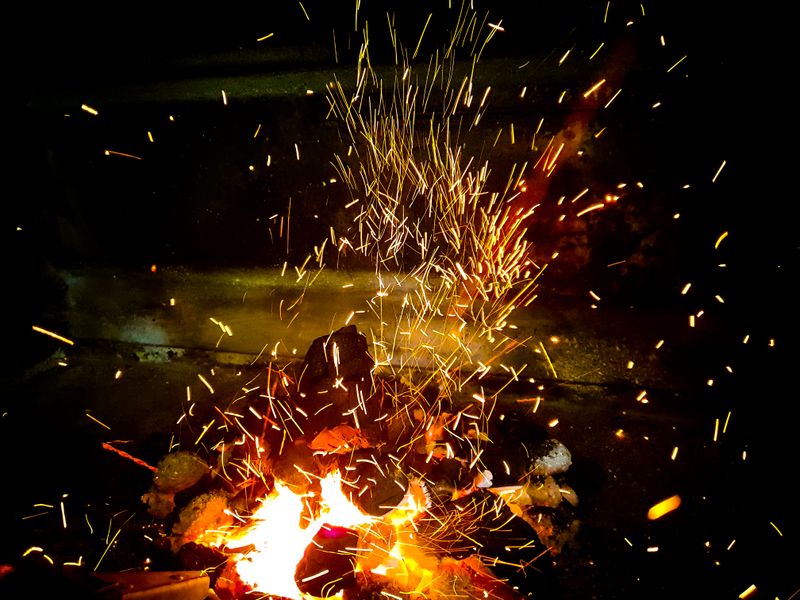Out-of-control wildfires force 20,000 residents to flee Yellowknife, Canada
Background
Yellowknife, the capital of Canada‘s Northwest Territories, and its surrounding areas are facing a major wildfire crisis. The Behchoko/Yellowknife wildfire, which is burning less than 10 miles outside the city, has prompted authorities to order the evacuation of approximately 20,000 people. The wildfire is just one of more than 230 active fires threatening cities and towns in the region.
Evacuation Efforts
The order to evacuate was issued by the minister of municipal and community affairs, compelling residents of Yellowknife, Ingraham Trail, and the First Nations communities of N’Dilo and Dettah to flee their homes and businesses by car and plane. Residents were given until noon on Friday to evacuate, and authorities warned that without rain, the inferno could reach the area by the weekend.
In response to the crisis, firefighting crews have been working tirelessly to combat the blaze. Airtankers have been conducting missions throughout the night, targeting hot spots and attempting to protect cabins and other structures along Highway 3, the main road west out of Yellowknife. Measures to protect the city itself include the activation of sprinklers and the creation of fuel breaks.
The Devastating Impact
Heart-wrenching images have captured the magnitude of the wildfires. Social media platforms have been flooded with photos and videos showing bumper-to-bumper traffic as residents desperately try to flee the area. Some images depict vehicles engulfed in smoke as they navigate through the highway, with smoldering trees lining the roads on their route to safety.
Evacuation Options
The evacuation order allows those unable to leave by car to register for evacuation flights. This also applies to individuals who are immunocompromised or have high-risk health conditions. These flights will commence at 1 p.m. today, and passengers are limited to one carry-on item per person. Authorities are cautioning against evacuation attempts by boat to nearby islands due to declining air quality as the fires draw nearer.
Government Response
In light of the crisis, Municipal Affairs Minister Shane Thompson declared a state of emergency on Tuesday. This decision grants the territory the authority to acquire and deploy essential resources necessary to combat the fires. Minister Thompson emphasized the gravity of the situation, stating, “Our government is using every tool available to assist.”
The Significance of Yellowknife
Yellowknife holds historical and cultural importance as the traditional land of the Yellowknives Dene First Nation. Originally founded as a gold mining town in 1934, it later became the capital of the Northwestern Territories in 1967. Known as a hub for cultural, economic, and government services in the region, Yellowknife is also renowned for its prime location to witness the Northern Lights. Additionally, the city experienced a resurgence in mining activities after the discovery of diamonds in 1991 and currently boasts three mines within close proximity.
Editorial and Advice
The out-of-control wildfires engulfing Yellowknife and its surrounding areas serve as a stark reminder of the urgent need to address climate change and its catastrophic consequences. As the frequency and severity of wildfires continue to escalate worldwide, it is essential for governments, communities, and individuals to prioritize sustainable practices that reduce the risk of such events and mitigate their impact.
The current crisis underscores the importance of preparedness and emergency response strategies. Authorities must ensure that evacuation plans are well-coordinated and accessible to all members of the community, including those with special needs or health conditions.
Furthermore, the management of natural resources, particularly in environmentally sensitive areas like Yellowknife, must be approached with caution. The exploitation of natural resources should be balanced with stringent environmental safeguards to minimize the potential for devastating fires.
As a society, we must also recognize the tremendous burden climate change-induced disasters place on marginalized communities and vulnerable populations. Adequate support systems and resources must be in place to address the specific needs of these communities during crises.
Finally, the Yellowknife wildfires should serve as a wake-up call for governments and individuals alike to prioritize efforts to mitigate climate change. Transitioning to renewable energy, reducing carbon emissions, and implementing sustainable land and resource management practices are crucial steps in safeguarding our planet’s ecosystems and preventing future catastrophic events.

<< photo by Magda Ehlers >>
The image is for illustrative purposes only and does not depict the actual situation.
You might want to read !
- “Race Against the Flames: Yellowknife Residents Flee, Traffic Gridlock Ensues”
- The article title: Unprecedented Chaos: Ucas Clearing Website Crashes Amidst A-level Results Frey
- Exploring the Love and Legacy of “Blue Beetle”: Director Ángel Manuel Soto Opens Up
- Inferno on the Canary Islands: Tenerife villages forced to evacuate as wildfires ravage the land
- The Blaze Engulfs Hawaii: Biden’s Major Disaster Declaration Unveils the Stark Reality
- Raging Infernos: Devastating Hawaii Wildfires Claim Six Lives and Leave Destruction in Their Wake
- Escape from the Inferno: Mass Exodus as Greece’s Rhodes Island Burns
- Ukraine dam collapse triggers mass evacuation as floods sweep town
- Exploring Indian Independence Day: Celebrations of Freedom and National Pride
- Exploring the Significance and Festivities of Indian Independence Day
- Reimagining Safety: Beyond Wonderland Takes Action After Shooting




